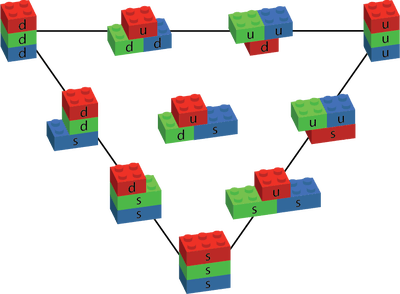Discovering the beauty and charm of the cosmos
- Debarati Chatterjee
- Jul 11, 2017
- 2 min read
Anticipated, but elusive until now: the LHCb experiment this week announced the discovery of a new particle, the so-called Ξcc++. A long-awaited finding, that will pave the way for the discovery of yet other particles of its type. The LHCb experiment is an ambitious experiment performed at the Large Hadron Collider, the "b" standing for "beauty", one of the entities that describes the behaviour of heavy particles. This is a mission dedicated to study any deviations from the "Standard Model" of particle physics.
According to the Standard Model, there are four types of fundamental forces that govern nature; gravity being the weakest, electromagnetism (electricity and magnetism described within the same framework), and the nuclear and particle interactions governed by two other forces, named the "strong" and the "weak", depending on their relative strengths. Further, all matter that we see around us is made up of tiny fundamental entities called "atoms" (coming from the Greek word "atomos" which stands for indivisible), much like the building blocks in Lego. With the advent of advanced microscopes, we are now able to look deeper within the atoms. The atoms have a structure similar to that of planetary systems; with a massive nucleus situated at the centre, made up of neutral neutrons and positively charged protons, and the lightweight negatively charged electrons going around them in orbits, much like the planets going around the sun. Are the neutrons, protons and electrons then the elementary structures that build up all matter?
It so happens, that even neutrons and protons have composite structures; they are built out of combinations of three "quarks" with fractional masses and quantum numbers (numbers which define a certain conserved property). Interestingly, quarks may be of different types, given the names: up, down, charm, strange, top and bottom, with increasingly large masses. When three of them combine to form composite particles, known as baryons, they add up to produce a spectrum of particles with different masses and charges, neutron and proton being among the lightest and the most abundant in the universe. The heaviest baryons are those containing the bottom quark, having "beauty" or "bottomness" quantum number associated with it, and produced briefly during heavy-ion collisions, such as at LHC. The discovered particle, Xicc++, is one such heavy baryon, having two charm quarks in addition to a light up quark. The discovery of heavy baryons is very interesting from the standpoint of particle physics, because they show a certain violation during their decay to lighter particles, which may provide us with the clue as to why, in the universe, matter dominates instead of antimatter.



































Yorumlar